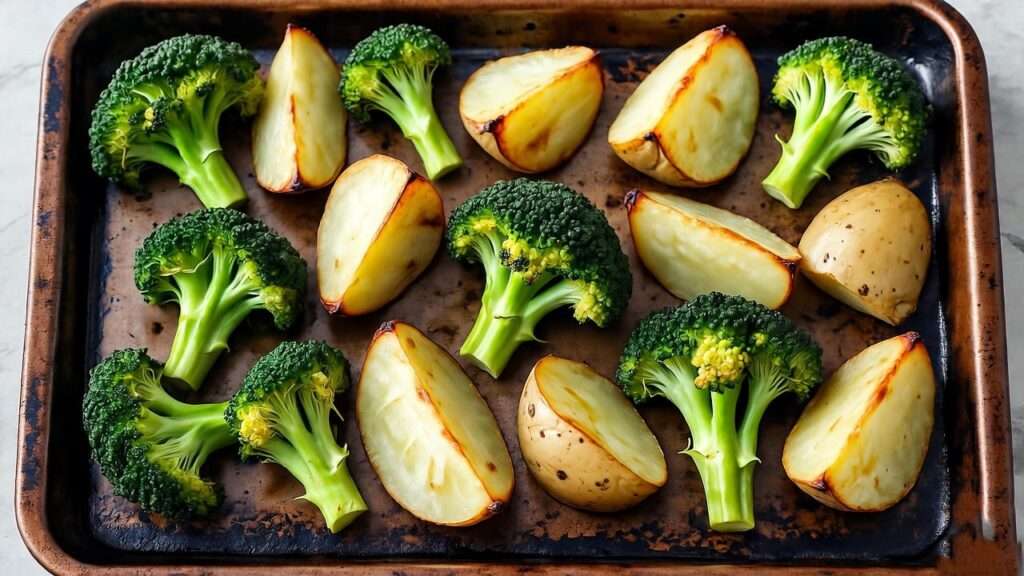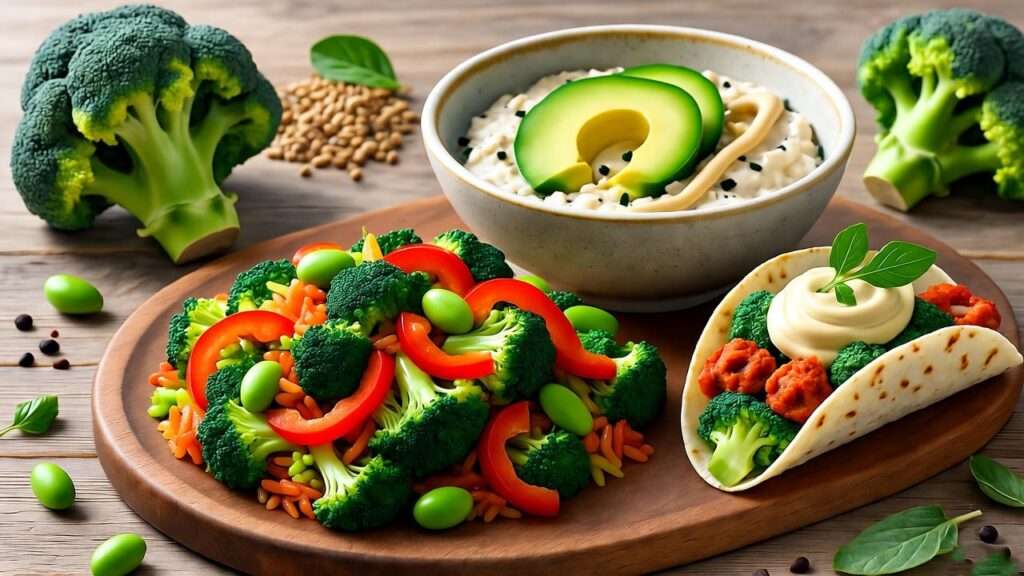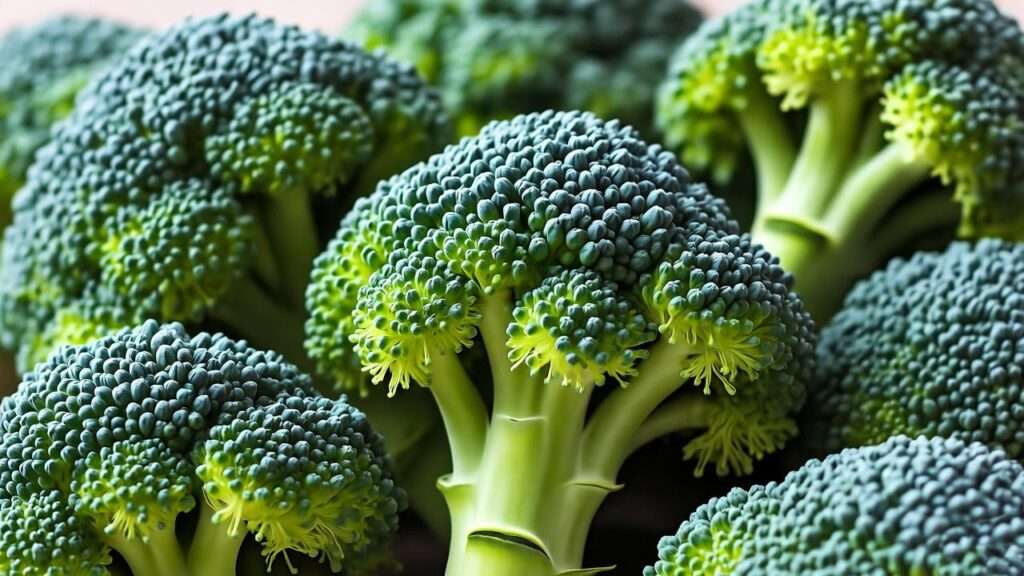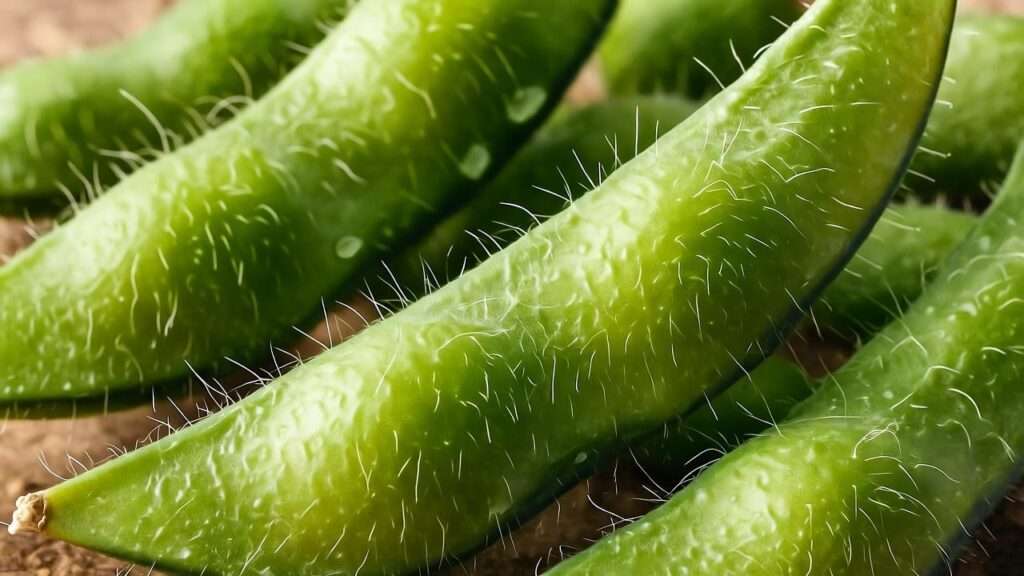Picture this: it’s late afternoon, your stomach’s growling, and you’re craving something crunchy, savory, and satisfying. But you’re committed to a plant-based lifestyle, and the thought of greasy, processed chips makes you wince. Enter cauliflower chips—the game-changing snack that delivers all the crispiness you love without derailing your health goals. These nutrient-packed, plant-based bites are taking the world by storm, offering a guilt-free way to indulge. In this comprehensive guide, we’ll explore everything you need to know about cauliflower chips: their benefits, how to make them, the best brands to buy, and creative ways to enjoy them. Whether you’re a vegan veteran or just dipping your toes into plant-based eating, this article will equip you with expert insights and practical tips to make cauliflower chips your go-to snack.
What Are Cauliflower Chips?
Defining Cauliflower Chips
Cauliflower chips are crispy, lightweight snacks made from cauliflower, a versatile cruciferous vegetable. Unlike traditional potato chips, which are often fried and loaded with unhealthy fats, cauliflower chips are typically baked or dehydrated, preserving the vegetable’s natural goodness. They’re seasoned with spices, herbs, or plant-based flavorings like nutritional yeast to create a satisfying crunch that rivals conventional chips. Perfect for vegans, vegetarians, or anyone seeking healthier snack options, cauliflower chips are a staple in plant-based diets, offering a low-calorie alternative that doesn’t skimp on flavor.
Why Cauliflower? The Nutritional Powerhouse
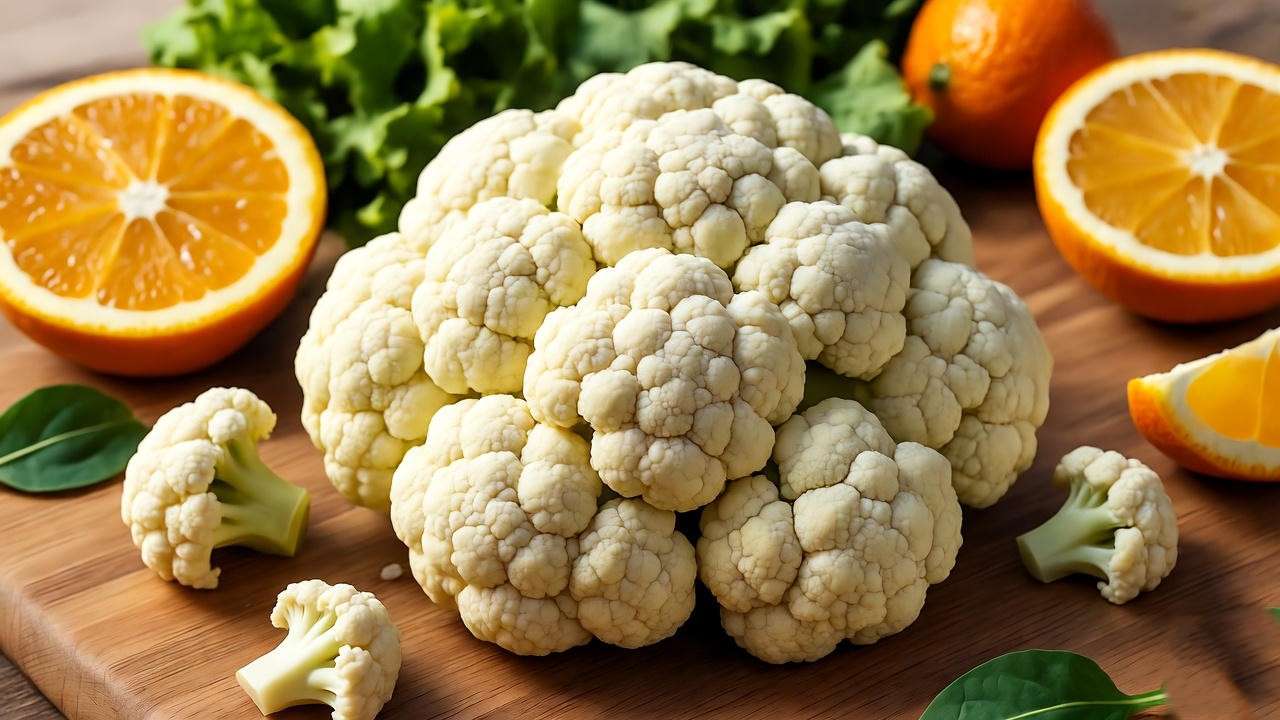
Cauliflower is a nutritional superstar, making it an ideal base for a healthy snack. According to the USDA, a single cup of cauliflower contains just 25 calories, 2 grams of fiber, and a wealth of vitamins, including 77% of the daily recommended intake of vitamin C and 20% of vitamin K. It’s also rich in antioxidants like glucosinolates, which studies in journals like Nutrients (2023) suggest may reduce inflammation and support overall health. For plant-based eaters, cauliflower chips provide a nutrient-dense option that aligns with low-carb, keto, or gluten-free diets, making them a versatile choice for diverse dietary needs.
Why Choose Cauliflower Chips for Plant-Based Snacking?
Health Benefits of Cauliflower Chips
Cauliflower chips are a game-changer for health-conscious snackers. Compared to traditional potato chips, which can pack 150 calories and 10 grams of fat per ounce, cauliflower chips often contain half the calories and minimal fat, especially when baked or air-dried. The high fiber content supports digestion and promotes satiety, aiding in weight management. Registered dietitian Dr. Emily Harper notes, “Cauliflower-based snacks are a fantastic way to boost vegetable intake while satisfying cravings, offering vitamins and minerals that processed snacks lack.” Additionally, the antioxidants in cauliflower may help combat oxidative stress, making these chips a smart choice for long-term wellness.
Environmental and Ethical Appeal
Choosing cauliflower chips isn’t just good for your body—it’s good for the planet. Cauliflower is a low-impact crop, requiring less water and land than many other snack ingredients, such as potatoes or corn used in traditional chips. According to a 2024 report by the World Resources Institute, cruciferous vegetables like cauliflower have a significantly lower carbon footprint than heavily processed snack foods. For eco-conscious consumers, cauliflower chips align with sustainable eating practices, reducing reliance on resource-intensive, factory-farmed ingredients. Plus, many brands prioritize organic and non-GMO cauliflower, ensuring ethical sourcing that resonates with plant-based values.
Versatility for All Diets
One of the standout features of cauliflower chips is their adaptability. Whether you’re vegan, vegetarian, keto, or gluten-free, these chips fit seamlessly into your diet. They’re naturally free of animal products, making them a go-to for plant-based eaters, and their low-carb profile appeals to those following ketogenic or paleo plans. For individuals with gluten sensitivities, cauliflower chips—when made without wheat-based additives—offer a safe, delicious option. With customizable seasonings, from spicy to savory, they cater to a wide range of taste preferences, ensuring everyone can enjoy this wholesome snack.
How to Make Your Own Cauliflower Chips at Home
Step-by-Step Recipe for Crispy Cauliflower Chips
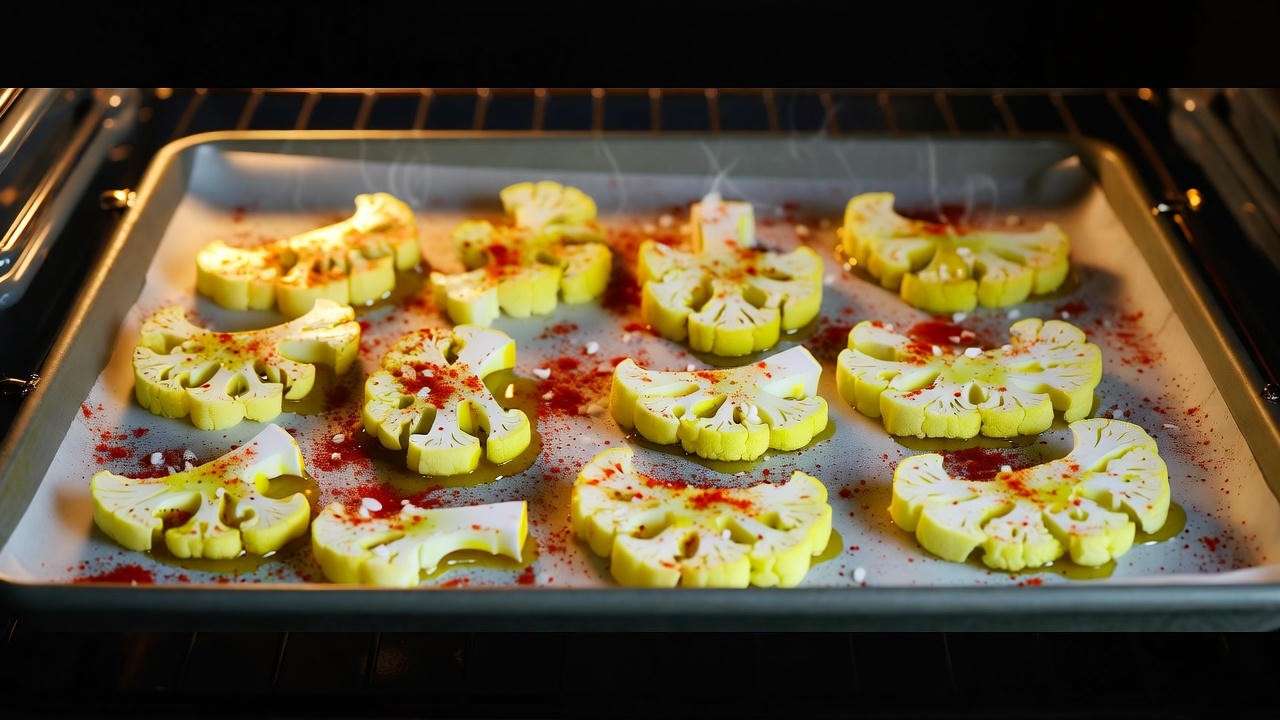
Making cauliflower chips at home is easier than you might think, and the results are both delicious and customizable. Here’s a foolproof recipe to get you started:
Ingredients (serves 4):
- 1 medium head of cauliflower (about 1.5 lbs)
- 2 tbsp olive oil or avocado oil
- 1 tsp sea salt
- 1 tsp smoked paprika (optional, for flavor)
- 1 tbsp nutritional yeast (for a cheesy, vegan twist)
- Optional: chili powder, garlic powder, or dried herbs
Tools:
- Mandoline slicer (for thin, uniform slices)
- Baking sheet or dehydrator
- Parchment paper
Instructions:
- Prep the Cauliflower: Wash and dry the cauliflower. Remove the leaves and core, then slice into thin, chip-sized pieces (1/8-inch thick) using a mandoline for consistency.
- Season: In a large bowl, toss the slices with oil, salt, and your chosen seasonings. Ensure even coating for maximum flavor.
- Bake or Dehydrate:
- Oven Method: Preheat oven to 400°F (200°C). Arrange slices in a single layer on a parchment-lined baking sheet. Bake for 20-25 minutes, flipping halfway, until golden and crispy.
- Dehydrator Method: Set dehydrator to 135°F (57°C). Arrange slices and dehydrate for 8-10 hours for ultra-crisp results.
- Cool and Store: Let chips cool completely to maintain crispiness. Store in an airtight container for up to 5 days.
Essential Tools and Ingredients
To achieve perfect cauliflower chips, a few tools and ingredients are key. A mandoline slicer ensures uniform slices, which cook evenly and crisp up beautifully. If you don’t have a dehydrator, a standard oven works well, though a dehydrator yields the crunchiest results. For seasonings, keep nutritional yeast, smoked paprika, and sea salt on hand—these pantry staples create bold, plant-based flavors. Opt for organic cauliflower to avoid pesticides, especially if you’re prioritizing clean eating.
Troubleshooting Common Issues
New to making cauliflower chips? Here are solutions to common pitfalls:
- Soggy Chips: Ensure slices are thin and evenly spaced on the baking sheet to allow proper air circulation. Avoid overcrowding.
- Uneven Cooking: Use a mandoline for consistent thickness, and rotate trays if using multiple baking sheets.
- Bland Flavor: Experiment with bold seasonings like cayenne, turmeric, or vegan parmesan (made from cashews and nutritional yeast). Taste-test your seasoning mix before baking.
These tips are drawn from plant-based cooking communities on platforms like X, where home cooks share their trial-and-error experiences to perfect veggie-based snacks.
Buying the Best Cauliflower Chips: What to Look For
Key Factors for Choosing Store-Bought Cauliflower Chips
Not up for making your own? Store-bought cauliflower chips are a convenient alternative, but not all are created equal. Look for brands with minimal ingredients—ideally just cauliflower, oil, salt, and natural seasonings. Avoid products with artificial flavors, excessive sodium, or fillers like potato starch, which dilute the health benefits. Check for certifications like non-GMO, organic, or gluten-free if those align with your dietary needs. Reading nutrition labels is crucial; aim for chips with less than 100 mg of sodium per serving to keep things heart-healthy.
Top Brands to Try in 2025
Based on consumer reviews, taste tests, and nutritional analysis, here are some top cauliflower chip brands to explore:
| Brand | Price (USD) | Key Ingredients | Pros | Cons |
|---|---|---|---|---|
| Rhythm Superfoods | $4.99/2 oz | Organic cauliflower, sunflower oil, sea salt | Organic, non-GMO, bold flavors | Smaller portion size |
| Brad’s Plant Based | $5.49/2 oz | Cauliflower, nutritional yeast, spices | Vegan, nutrient-dense, crunchy | Slightly higher price |
| From The Ground Up | $3.99/4 oz | Cauliflower, cassava flour, olive oil | Affordable, widely available | Contains cassava (not pure cauliflower) |
Where to Buy
Cauliflower chips are widely available at health food stores like Whole Foods, Sprouts, and Trader Joe’s, as well as online retailers like Amazon and Thrive Market. Subscription services like Misfits Market or Hungryroot offer plant-based snack boxes, often including cauliflower chips at a discount. For local options, check natural grocery stores or farmers’ markets for artisanal brands that prioritize organic ingredients.
Creative Ways to Enjoy Cauliflower Chips
Snack Pairings and Dips
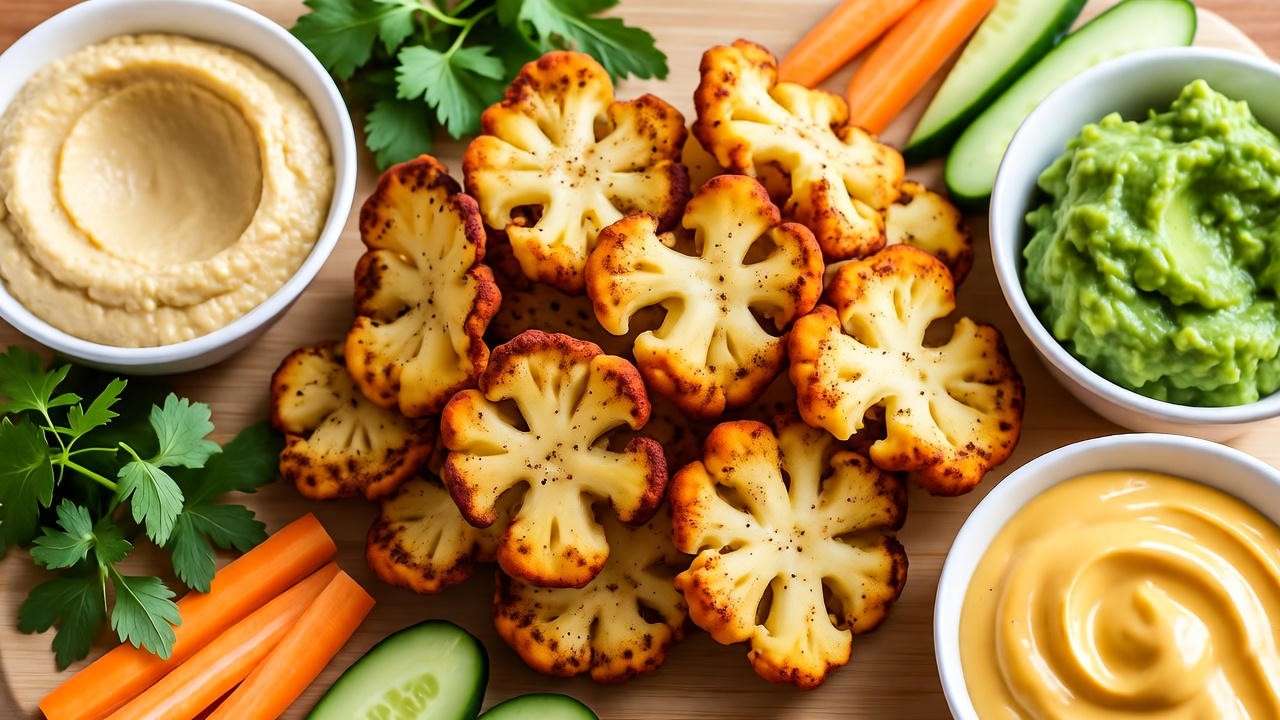
Cauliflower chips shine as a standalone snack but elevate any spread when paired with the right dips. Try these plant-based options:
- Classic Hummus: The creamy texture complements the chips’ crunch.
- Guacamole: Avocado’s healthy fats pair perfectly with low-calorie chips.
- Cashew Queso: Blend cashews, nutritional yeast, and spices for a cheesy, vegan dip.
For a quick snack board, serve cauliflower chips alongside fresh veggies, olives, and a variety of dips for a crowd-pleasing, plant-based platter.
Incorporating into Meals
Think beyond snacking—cauliflower chips can enhance meals in creative ways. Try these ideas:
- Cauliflower Chip Nachos: Layer chips with black beans, vegan cheese, salsa, and avocado for a healthy twist on nachos.
- Salad Topper: Crumble chips over a kale or quinoa salad for added crunch.
- Breading Substitute: Crush chips and use as a coating for baked zucchini or tofu.
Mini-Recipe: Plant-Based Cauliflower Chip Nachos
- Ingredients: 2 cups cauliflower chips, 1 cup black beans, ½ cup vegan cheddar, ¼ cup salsa, 1 avocado, diced.
- Instructions: Spread chips on a baking sheet. Top with beans, cheese, and salsa. Bake at 350°F for 5-7 minutes until cheese melts. Garnish with avocado and serve.
Kid-Friendly and Party Ideas

To make cauliflower chips appealing to kids, try cutting homemade chips into fun shapes using cookie cutters before baking. Opt for mild seasonings like sea salt or a touch of cinnamon for picky eaters. For parties, create a “chip and dip bar” with cauliflower chips as the star, alongside colorful dips and garnishes like fresh herbs or pickled veggies. This setup is a hit at gatherings, offering a healthy yet festive option that guests love.
Expert Tips for Maximizing Your Cauliflower Chip Experience
Storage
To keep cauliflower chips crispy, store them in an airtight container in a cool, dry place. Homemade chips last up to 5 days, while store-bought varieties can stay fresh for weeks if unopened. To revive slightly stale chips, pop them in a 300°F oven for 3-5 minutes to restore crunch. Avoid storing in humid environments, as moisture can soften the texture.
Flavor Enhancements
Elevate your cauliflower chips with creative seasonings to suit any palate. For a spicy kick, try a blend of cayenne pepper and lime zest. For umami lovers, sprinkle on a mix of nutritional yeast and garlic powder for a cheesy, savory profile. If you prefer sweet and savory, a dash of cinnamon and coconut sugar can transform your chips into a unique treat. Experiment with small batches to find your perfect flavor combo, and consider feedback from plant-based communities on platforms like X, where users often share innovative seasoning ideas like truffle oil or za’atar.
Scaling for Large Batches
Hosting a gathering or meal prepping for the week? Scaling up your cauliflower chip recipe is simple but requires attention to detail. When making large batches, work in smaller trays to avoid overcrowding, which can lead to uneven cooking. If using an oven, rotate trays every 10 minutes to ensure consistent crispiness. For dehydrators, invest in extra trays to maximize output without sacrificing quality. Prep tip: Slice multiple cauliflowers in advance and store in an airtight container in the fridge for up to 2 days to streamline the process.
The Science Behind Cauliflower Chips’ Appeal
Why We Crave Crunchy Snacks
The allure of crunchy snacks like cauliflower chips isn’t just about taste—it’s rooted in psychology and biology. Research published in Appetite (2024) suggests that the sound and sensation of crunching activate sensory pathways in the brain, enhancing eating satisfaction. Cauliflower chips satisfy this craving without the unhealthy fats and additives found in traditional chips, making them a smart choice for mindful eaters. Their light, airy texture also tricks the brain into feeling fuller, reducing the urge to overindulge.
How Cauliflower Chips Stack Up Nutritionally
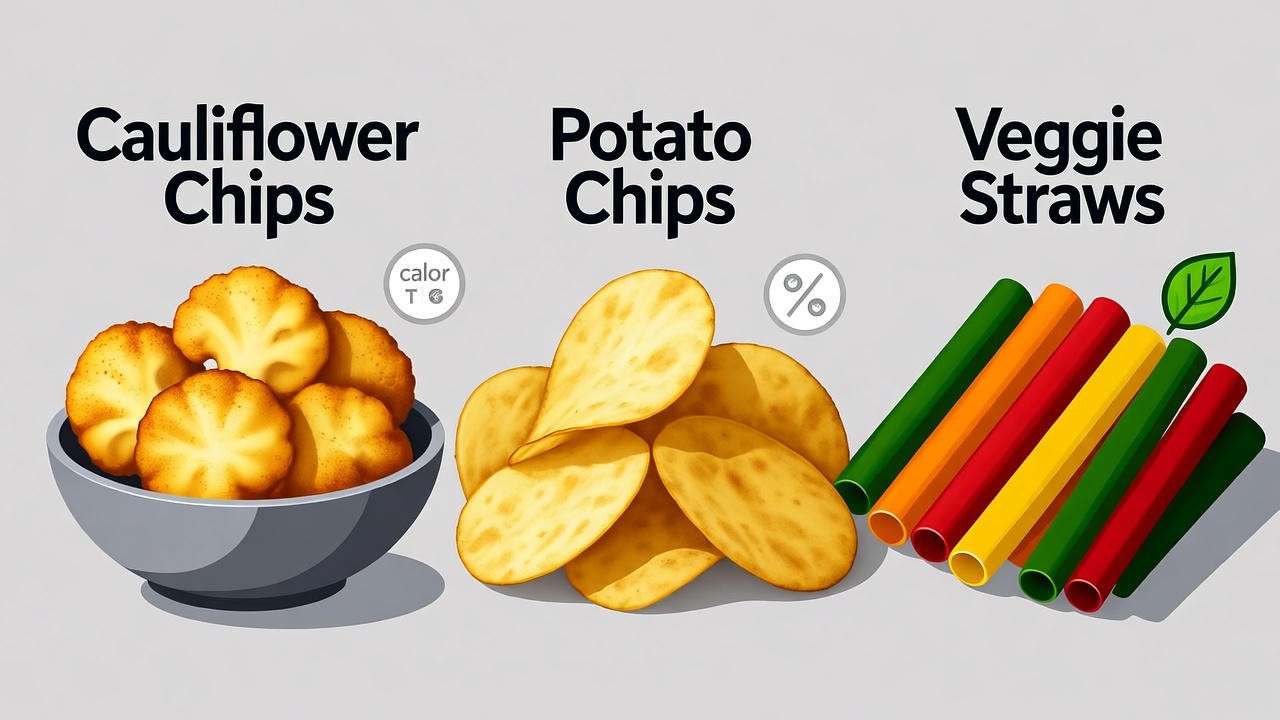
To understand why cauliflower chips are a superior snack, let’s compare them to other popular options:
| Snack | Calories (per oz) | Fat (g) | Fiber (g) | Key Nutrients |
|---|---|---|---|---|
| Cauliflower Chips | 70-100 | 3-5 | 2-3 | Vitamin C, K, antioxidants |
| Potato Chips | 150-160 | 10-12 | 1 | Minimal (mostly starch) |
| Veggie Straws | 130-140 | 7-9 | 0.5-1 | Limited vitamins |
This comparison highlights cauliflower chips’ edge: lower calories, less fat, and more fiber and nutrients. Unlike veggie straws, which often rely on potato flour, cauliflower chips deliver real vegetable benefits, making them a standout for plant-based diets.
Addressing Common Misconceptions
Some skeptics question whether cauliflower chips are truly healthy, assuming they’re just another processed snack. While some store-bought brands may include additives, high-quality options (or homemade versions) retain cauliflower’s nutritional benefits. Another misconception is that they’re hard to make at home. With the right tools and techniques, anyone can create crispy, delicious chips. Finally, some believe cauliflower chips lack flavor compared to traditional snacks, but with the right seasonings, they can be just as crave-worthy.
Cauliflower Chips in the Context of a Plant-Based Lifestyle
Supporting Long-Term Health Goals
Incorporating cauliflower chips into a plant-based diet can support long-term health goals like weight management, improved digestion, and reduced risk of chronic diseases. A 2025 meta-analysis in The Journal of Nutrition found that diets high in cruciferous vegetables like cauliflower are linked to lower risks of heart disease and certain cancers. By swapping out less healthy snacks for cauliflower chips, you’re boosting your veggie intake while satisfying cravings, a win-win for health-conscious eaters.
Aligning with Plant-Based Values
Plant-based living is about more than food—it’s a commitment to health, sustainability, and ethics. Cauliflower chips align perfectly with these values. They’re cruelty-free, environmentally friendly, and versatile enough to fit into any plant-based meal plan. Whether you’re a full-time vegan or simply exploring “Meatless Mondays,” cauliflower chips offer a delicious way to stay true to your principles without sacrificing flavor or convenience.
Community Insights and Trends
The plant-based community has embraced cauliflower chips as a must-have snack. On platforms like X, users share recipes, brand recommendations, and creative uses, from crumbling chips into soups to using them as a base for vegan “tacos.” Recent posts highlight a growing trend toward DIY cauliflower chips, with home cooks experimenting with flavors like buffalo sauce or matcha salt. These insights reflect the snack’s versatility and its role as a staple in modern plant-based diets.
FAQs About Cauliflower Chips
Are Cauliflower Chips Really Healthier Than Potato Chips?
Yes, cauliflower chips are generally healthier due to their lower calorie and fat content, higher fiber, and nutrient density. However, always check labels for store-bought versions, as some may contain added oils or sodium that reduce their health benefits.
Can I Make Cauliflower Chips Without a Dehydrator?
Absolutely! An oven set to 400°F works well for baking cauliflower chips. Just ensure thin, even slices and flip halfway through cooking to achieve crispiness.
How Do I Store Cauliflower Chips to Keep Them Crunchy?
Store in an airtight container in a cool, dry place. For homemade chips, consume within 5 days or re-crisp in the oven. Avoid humid environments to prevent sogginess.
What Are the Best Seasonings for Cauliflower Chips?
Popular choices include nutritional yeast for a cheesy flavor, smoked paprika for smokiness, or chili powder for heat. Experiment with herbs like rosemary or spices like turmeric for unique twists.
Are Cauliflower Chips Suitable for Kids?
Yes, especially when made with mild seasonings like sea salt. Cut into fun shapes or pair with kid-friendly dips like hummus to make them more appealing.
Conclusion
Cauliflower chips are more than just a trendy snack—they’re a delicious, nutritious, and sustainable way to satisfy your cravings while staying true to a plant-based lifestyle. Whether you’re whipping up a batch at home, exploring top brands, or getting creative with dips and recipes, these versatile chips offer endless possibilities for guilt-free indulgence. With their low-calorie profile, eco-friendly appeal, and adaptability to various diets, cauliflower chips are a must-try for anyone looking to snack smarter. Dive into this guide’s recipes, tips, and insights to make cauliflower chips a staple in your kitchen—and share your creations with the plant-based community to keep the inspiration flowing!








